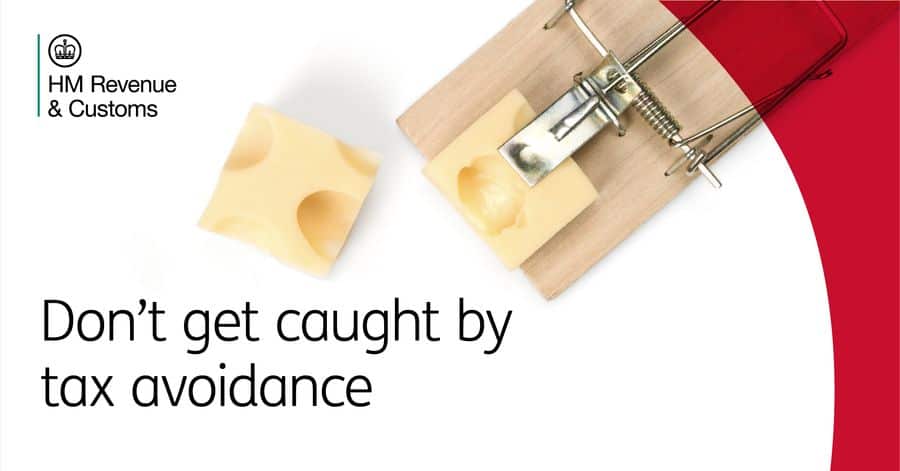Guest article: Why healthcare sector workers should be wary of tax avoidance schemes
Health contractors in a wide range of roles across the sector are being targeted by unscrupulous promoters of tax avoidance schemes. Mary Aiston, Director of Counter Avoidance for HM Revenue and Customs (HMRC), discusses why healthcare sector workers should avoid being drawn into tax avoidance schemes that promise higher take home pay and less administration.
By Mary Aiston
Tax avoidance is when people bend the rules of the tax system to try to pay less than they owe. HMRC’s report, the Use of Marketed Tax Avoidance schemes in the UK, has shown that contractors are often targeted and drawn into schemes marketed by companies promising higher take home pay and less administration.
Many of these schemes do not work and there could be significant financial implications for anyone involved. Use the risk checker to check whether your current contract could involve tax avoidance.
Contractors who use tax avoidance schemes end up having to pay back the tax they should have paid in the first place – with interest and potentially a penalty. That is on top of the fees they have already paid for joining the scheme.

This is because each of us is responsible under UK law for paying the correct amount of tax. This still applies if contractors have appointed someone else to deal with their tax affairs or been given bad advice – the ultimate responsibility and risk rests with the individual.
You don’t need to be a tax expert to spot an avoidance scheme. If you’re offered higher take home pay simply for rearranging how it reaches you, for example as a non-repayable loan or as a trust payment, it almost certainly is tax avoidance.
HMRC wants to help anyone involved in such schemes to leave them before they run up large tax bills like critical care nurse, Tanya.
Tanya chose an umbrella company that gave her the highest take-home pay. They offered her a tax avoidance scheme which she joined.
While she was busy taking care of her patients, she discovered the Tax Plan model sold to her by her umbrella company had left her with an unexpected tax bill.
If you are concerned that you could be in an avoidance scheme, check your pay slip for the signs that you are paying the right tax. Our Spotlight 54 article strongly advise contractors to leave tax avoidance schemes as early as possible and settle their tax affairs.
Look out for any of the following signs:
- A scheme that allows you to keep more of your income than you would expect, with little or no deductions for Income Tax and National Insurance contributions (NICs)
- Some, or all of the payments are said to be “non-taxable”. These could be described as loans, annuities, bonuses, or shares. These payments are no different to normal income and you still need to pay Income Tax and NICs on them
- You may be told the schemes are safe and compliant or approved by HMRC. This is not true - HMRC never approves avoidance schemes
- Only a part of the total payments you receive are taxed as income. If you are employed, this is often close to the national minimum wage
- You are offered a choice between a standard or “enhanced” pay scheme. The enhanced version is likely to be tax avoidance
- You have been asked to sign more than one contract or agreement
- Your employment contract or agreement does not state how your income will be paid, or provide you with a breakdown of all your deductions
- You may even be offered a ‘cash bonus’ if you recommend the scheme to a friend.
If you think you have joined such a scheme, it is crucial that you leave it as soon as you can. The earlier you leave, the sooner you can settle the tax that you owe and reduce your chances of higher tax bills.
Recognise…tax avoidance. Learn how to spot the signs, understand how it works, and know the risks.
Understand…how umbrella companies work. If you work through an ‘umbrella company’ – here’s what you need to know about how they should operate.
Check…your pay and contract arrangements. Looking at your payslip is a useful way to check for signs that you may be involved in a tax avoidance scheme.
Get help…if you think you’re already in a tax avoidance scheme and don’t know how to get out.
If you think you have spotted a tax avoidance scheme, you can report it by using the Report Tax Fraud Online form. Please make sure you enter the words ‘Contractor campaign’ in the ‘Other information’ section. You can also phone HMRC on 0800 788 887 (outside the UK +44 (0)203 080 0871).
If you think you are in a tax avoidance scheme, contact us and we’ll help you get on the right track. We won’t be judgemental and if you can’t afford to pay everything in one go, we may be able to offer you an instalment arrangement. Email us at exitsteam.counteravoidance@hmrc.gov.uk
For further information read Tax avoidance: getting out of an avoidance scheme.



